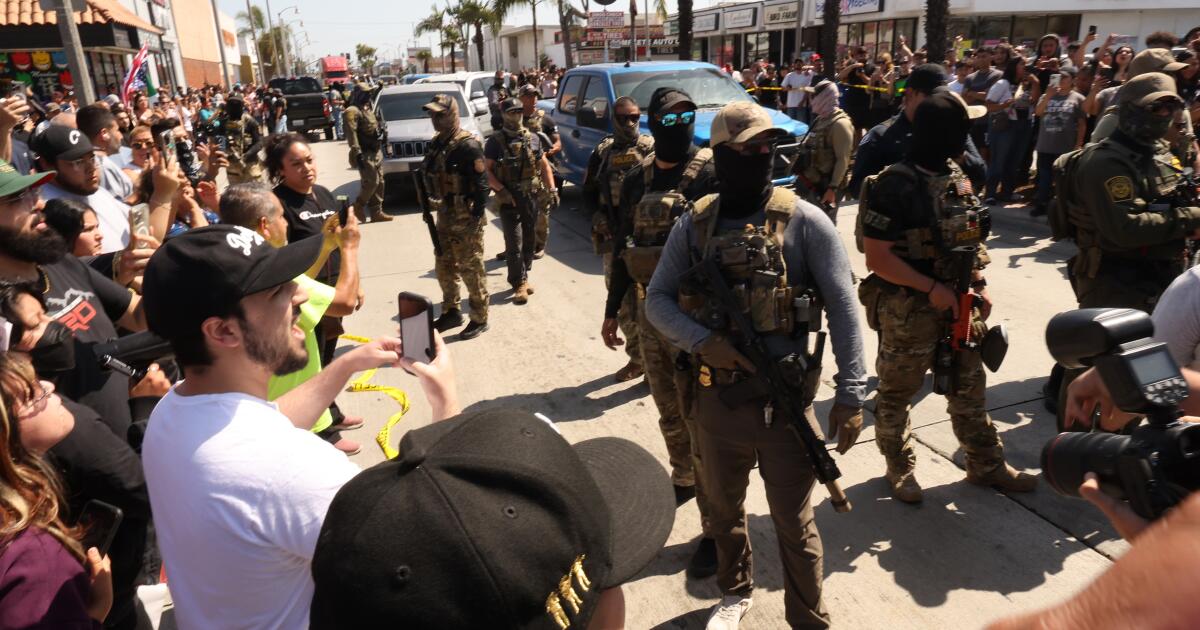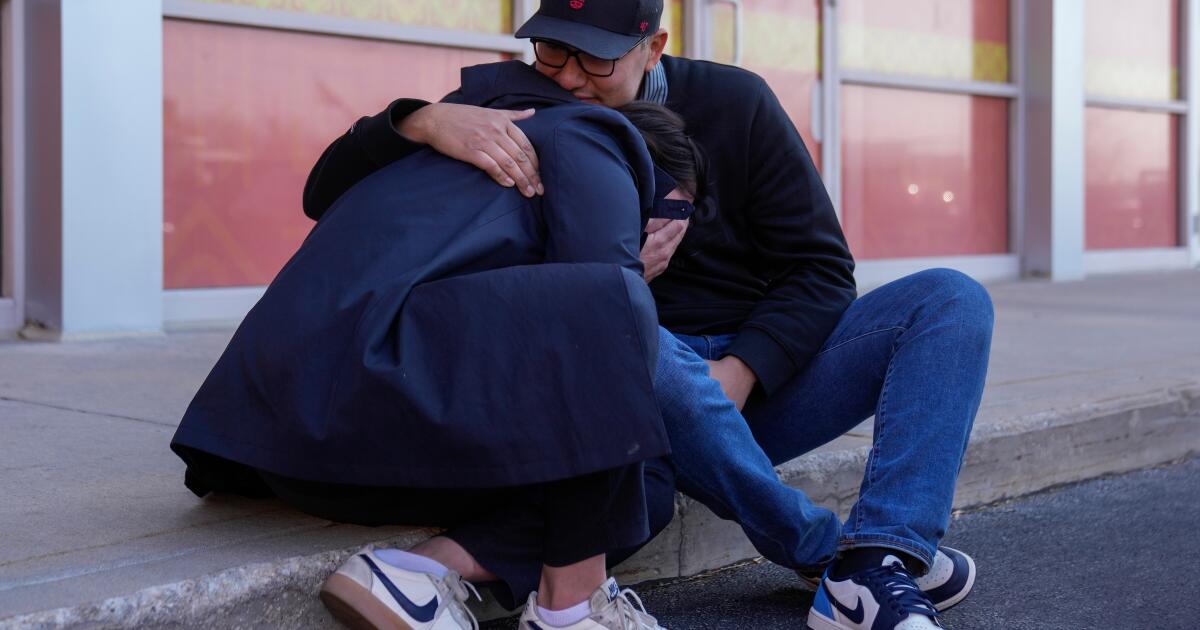L.A. County set to vote on banning masked ICE agents and defying Trump
Los Angeles County supervisors plan to vote soon on an ordinance that would prohibit law enforcement, including Immigration and Customs Enforcement agents, from wearing masks or disguising their identities while conducting operations in unincorporated L.A. County, probably setting up a legal battle with the Trump administration.
On Tuesday, L.A. County supervisors Janice Hahn and Lindsey P. Horvath will introduce the ordinance for a vote. The ordinance would also require law enforcement officers, including local, state and federal, to wear identification and make clear their agency affiliation.
Since immigration agents began raiding Los Angeles neighborhoods and worksites in June, many local leaders have pushed for action on the issue. Residents are concerned about the masked agents, often disguised with face coverings and masks. The masks and lack of identification have sowed fears the armed men could be people posing as law enforcement officers. Residents have called on sheriff’s deputies and police for help, only to be told that local agencies do not interfere with federal operations.
If the ordinance is approved, it will — per county policy — go again before supervisors for a second vote, scheduled for Dec. 9. It would then go into effect 30 days later. But legal experts have cast doubt that federal agents would be required to follow the ordinance, and federal officials have already issued a legal challenge to similar state-level legislation.
L.A. County counsel Dawyn R. Harrison told the supervisors the ordinance “would most likely be challenged on the supremacy clause,” which holds that federal law supersedes state and local law.
Hahn has acknowledged that the federal government will probably take action against the ordinance. Still, she said in a statement, she never thought she would see the day when a “masked, anonymous federal police force” would target people based on their skin color and spoken language and force people into unmarked vans at gunpoint.
Just last week, her office said, nine people were picked up by masked ICE agents at worksites across Long Beach. According to the Long Beach Post, ICE agents chased a gardener into a restaurant in front of Long Beach police officers. Hahn said that the ordinance is driven by repeated instances of L.A. County residents encountering plainclothes or masked agents who refuse to identify themselves or show ID.
“This is how an authoritarian’s secret police operate — not legitimate law enforcement in a democracy,” she said. “This is about our residents’ constitutional rights — and this ordinance is designed to protect them. So, if this means a fight with the federal government in the courts, I think it is a fight worth having.”
Department of Homeland Security spokesperson Tricia McLaughlin has defended the tactic of agents wearing masks in order to protect their identities and keep them safe amid reported increased violence against federal officers. Previously, she stated that officers do verbally identify themselves, wear vests identifying their agency and use vehicles that include the name of the department, although agents are also often seen detaining people while wearing street clothing, without visible badges and driving unmarked cars.
McLaughlin said the administration will not abide by any attempt to ban masks.
“Sanctuary politicians attempting to ban our federal law enforcement from wearing masks is despicable and a flagrant attempt to endanger our officers,” she said in a statement.
Hahn, when asked if the board is considering alternatives if the ordinance fails to stand legal muster, said supervisors would “cross that bridge if we come to it.”
Since the immigration raids began on June 6 in Los Angeles through Aug. 26, the Department of Homeland Security has arrested at least 5,000 undocumented people in the county, the board’s Tuesday motion states, a number that has only gone up with the raids continuing. The motion states the ordinance would make exceptions for law enforcement officers wearing face coverings during undercover operations, as part of SWAT duties or for protection reasons.
“In an unprecedented moment when Los Angeles County’s immigrant communities are under attack, it is essential that the Board implement policies that cement its support for immigrants’ rights, and the rights of all people who may interact with law enforcement,” Hahn wrote in a motion for the ordinance. “It is reasonable to expect all officers — local, state, and federal — to comply with an ordinance that simply requires them to clearly show the public that they actually are law enforcement officers who are acting within the course of their duties.”
The California Legislature passed a similar bill that would require agents to identify themselves and prohibit on-duty officers from covering their faces.
After Gov. Gavin Newsom signed the bill, the federal government sued to stop it from taking effect.
Atty Gen. Pam Bondi made it clear the government would challenge any and all similar legislation, which she said is unconstitutional.
“California’s anti-law enforcement policies discriminate against the federal government and are designed to create risk for our agents,” Bondi said in a statement. “These laws cannot stand.”
Concerns over masked federal immigration agents have been ongoing and have also come from the federal government itself.
In October, the FBI issued a memo urging agents to show their identification when they are out in public, after a string of incidents that included masked criminals posing as immigration agents. The memo, first reported by Wired magazine, cited cases that included kidnappings, street crime and sexual violence.

